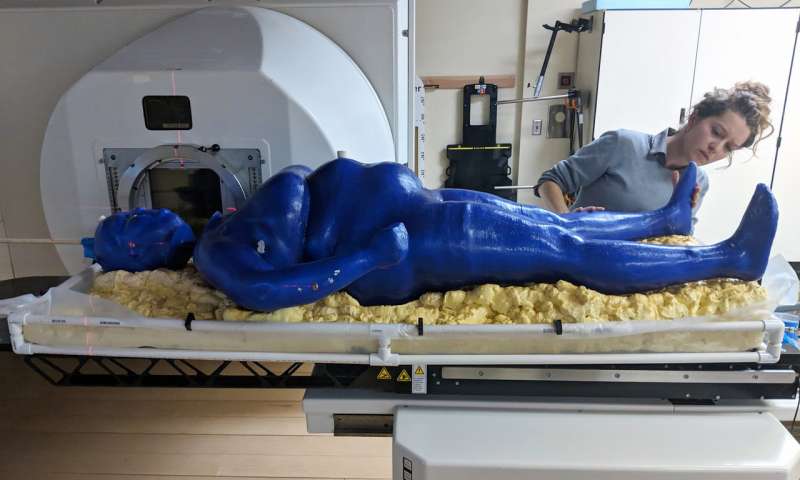The first actual-size “human body” has been 3D printed and her name is Marie. Her creator is not Dr Frankenstein but Meagan Moore, a student at Louisiana State University (LSU).
Moore is studying Biological and Agricultural Engineering and needed a way to find the best angle of dose distribution for radiation exposure on a real-size human.
She needed a “phantom” but when traditionally made, they can cost up to $40,000 and have no limbs. Instead, Moore developed “Marie” a 3D printed woman, for just $500. This 3D printed phantom has a detachable head, is 5ft 1inch and weighs 15 pounds. She can also hold 36 gallons of water for up to four and a half hours.
Moore explains the reason for 3D printing a body by saying: “Phantoms have been used in medical and health physics for decades as surrogates for human tissue… The issue is that most dosimetric models are currently made from a standard when people of all body types get cancer. No personalized full-body phantoms currently exist.”

3D Printing Marie the Phantom
To create the 3D printed phantom, Moore first took 3D scans of five real women supplied by the Pennington Biomedical Research Center. From these, she developed a lifelike 3D model which was then printed in bioplastic.
“I specifically wanted to work with a woman because, in science, women typically aren’t studied because they’re considered complex due to a variety of reasons. I want a person with the most complex geometry,” explains Moore.
It took 136 hours to complete the model which was printed in four sections on a BigRep printer at LSU. The resulting prints were connected using a hammer and chisel, as well as sautering, welding, and sandblasting.
The phantom is coated in liquid latex and purple (the color of LSU) roof sealant. Marie also wears anti-skid LSU socks. Finally the phantom was water tested to prove she could hold 36 gallons of water for four and a half hours.
Recently, Moore’s work has intrigued other researchers across the country at the University of Washington Medical Cyclotron Facility in Seattle. Researchers shipped Marie over in a coffin and used her to test fast neutron therapy, used for treating certain tumors.
Moore explains her future aspirations by saying: “What I’d like to see for this project is the research to be used as foundational work to personalize cancer treatments for people with more complex treatments. Children and breast cancer patients have really differing morphology that is usually very difficult to treat. I find that the more we learn about any body, the more complex it’s going to be. We’re still getting medicine wrong on a lot of levels. We have a lot to learn.”
Source: Phys.org
License: The text of "LSU Student 3D Prints Full Size Human Phantom for Testing Radiation Therapy" by All3DP is licensed under a Creative Commons Attribution 4.0 International License.